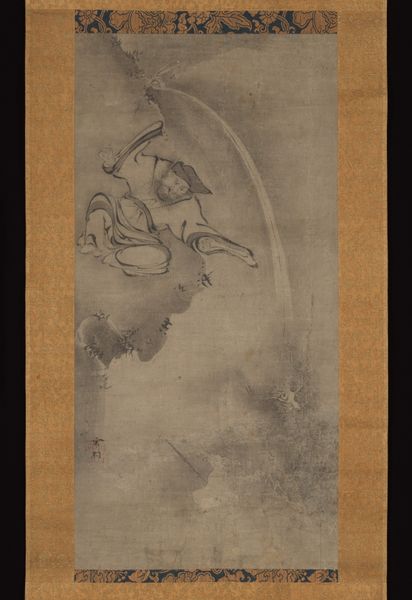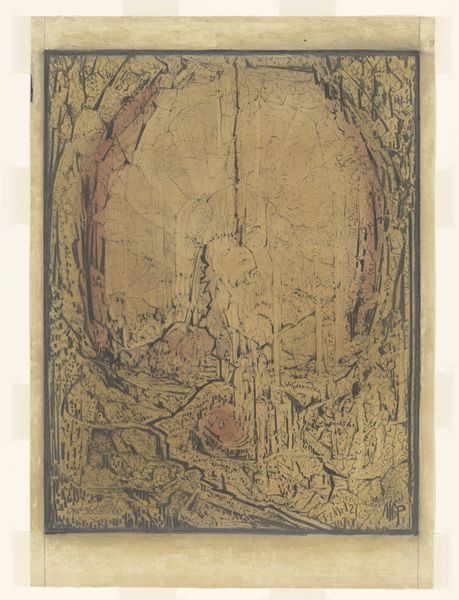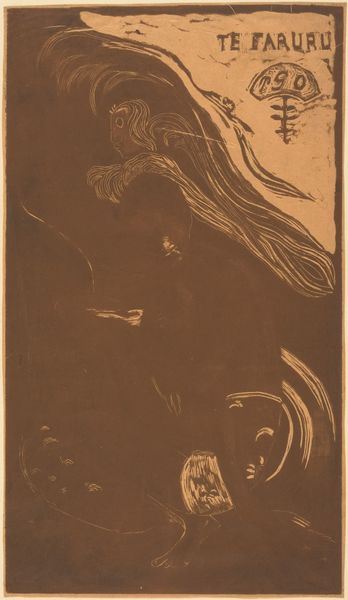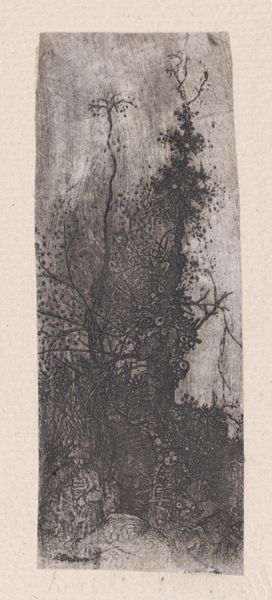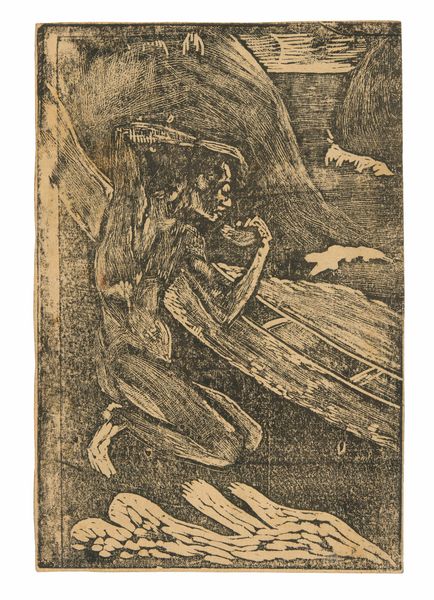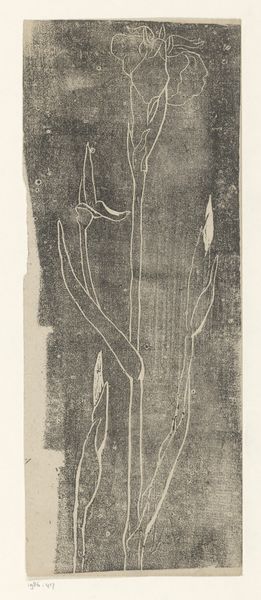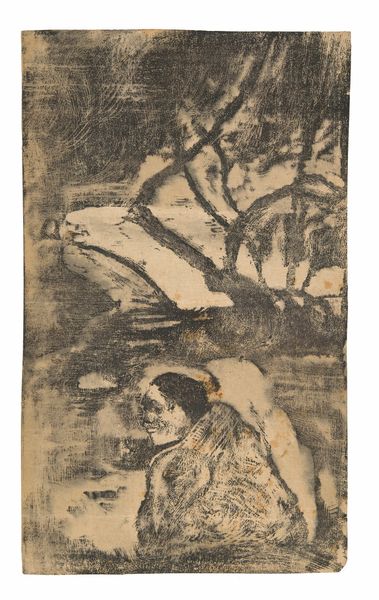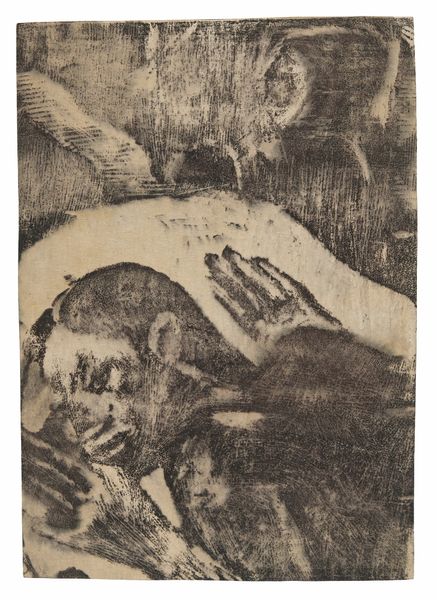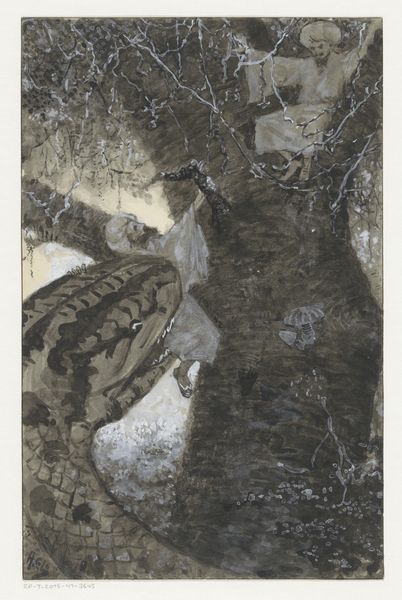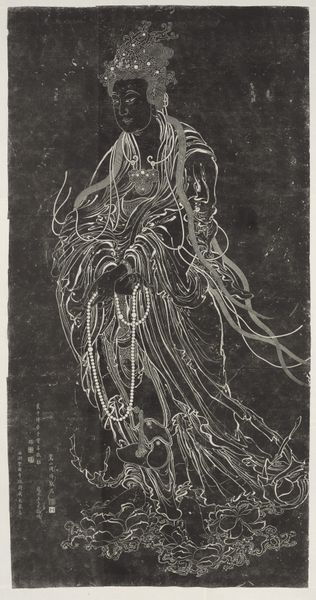
Te faruru (Here We Make Love), from the Noa Noa Suite 1893 - 1894
0:00
0:00
drawing, print, paper, woodcut
#
drawing
#
ink painting
# print
#
figuration
#
paper
#
woodcut
#
symbolism
#
post-impressionism
#
erotic-art
Dimensions: 355 × 202 mm (image); 356 × 204 mm sheet)
Copyright: Public Domain
Curator: Here we have Paul Gauguin’s “Te faruru (Here We Make Love),” a woodcut on paper created between 1893 and 1894, part of the Noa Noa Suite. Editor: My immediate response is how stark yet dreamlike the image appears. The monochrome palette adds to the mysterious, almost mythical quality. Curator: Absolutely. Gauguin's artistic choices were heavily influenced by his time in Tahiti. It's vital to recognize how Gauguin constructed an exoticized image of the island to fit the European imagination. “Te faruru” plays into this heavily, depicting a romantic encounter that’s less about authentic experience and more about a Western fantasy of the "primitive." Editor: The way he employs the woodcut technique—the rough texture and strong contrasts—reinforces that sense of constructed exoticism. It speaks to a colonial gaze, shaping and simplifying Tahitian culture into something consumable for a European audience. Do you feel this erotic theme plays into colonial power structures of the time? Curator: Without a doubt. The very title, translated as "Here We Make Love," romanticizes the act, framing the Indigenous body as readily available for consumption. But his work and his vision of the Polynesian subject were problematic as it supported stereotypical assumptions of cultural hierarchies. Editor: And how much of that "love," then, is simply appropriation? The power dynamics are inescapable. I think it's crucial for viewers to question the idealized visions presented in pieces like this and unpack the exploitative relationships behind their creation. Curator: Precisely. It demands we be critical of Gauguin's representation and of the broader socio-political context that allowed it. Editor: So while Gauguin may have believed he was celebrating Tahitian culture through works such as this print from the "Noa Noa Suite," we need to address its colonial implications, sparking dialogue about representation, desire, and power. Curator: Indeed. This woodcut reveals how deeply colonial ideology can be embedded within even seemingly innocent representations of love and landscape.
Comments
No comments
Be the first to comment and join the conversation on the ultimate creative platform.
